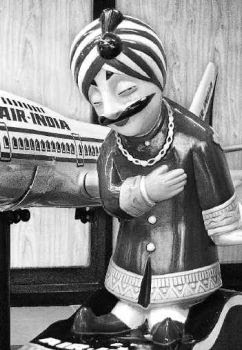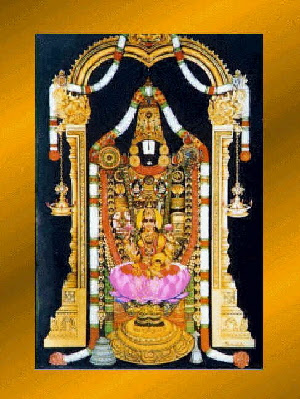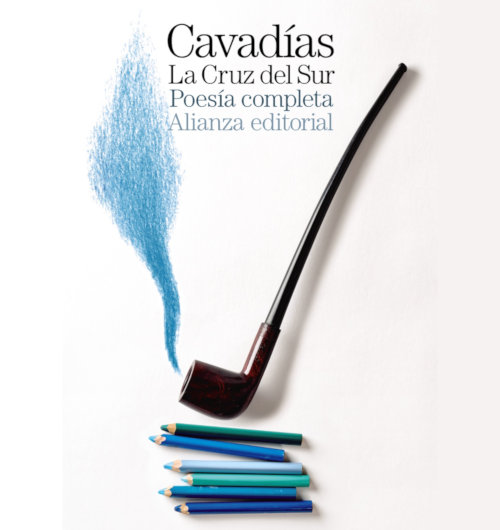Paharganj, Delhi
Since I am trapped here for a few days, thanks to the dilatory FRRO, I finally found the good food place.
I may have mentioned that Paharganj is the primary budget traveller's area in Delhi. This area is positively flooded with foreign tourists of all kinds, genuine neighborhood locals, and then the touts and insufferable rickshaw sharks that are only there to cheat the foreigners. It is good for certain things: cheap accomodation, meeting other foreigners, good internet with updated equipment, buying and selling used books, decent food (Indian, 'foreign' and Nepali), having a beer in a reputable rooftop bar. (Most Indian budget bars are not places a woman can go at all, let alone as a single person. )
There is a road near P-Ganj called Arakasham Road (aka "Ram Nagar") which features some more expensive, usually better quality, rooms in a less frantic, more "family" oriented atmosphere. There is scarce internet here and all the keyboards stick like hell. That's where I am now. It's mostly Indian families and some foreign tourists, who mostly flock to the upmarket Ajanta Hotel. (At $30 a night, I can't afford to stay there. I can only afford to have breakfast there.)
I like this particular hotel (Arya Tourist Lodge) for its "family" type qualities.
In India, "family" (as in "family restaurant") means "women friendly, not too sleazy." For one thing, some of the cheaper hotels (ie, in my budget range) rent rooms to gangs of young men who are looking for a place to party, drink, watch Hindi movies very loudly, smoke like chimneys and make noise all night long. "Family" hotels avoid renting to these guys.
For another, there is a woman working behind the desk here. A genuine auntie, with henna-orange hair, gold nose pin, Punjabi suit and a big smile. This adds to the wholesome environment. So do the Nepali room boys with their customary Nepali sweet shyness.
The owner, Mr Arya, is an old-school Brahmin whose dad started the operation. Dad's portrait hangs over the desk, garlanded with plastic flowers in memorial, keeping a watchful eye. In his office Mr Arya keeps his own watchful eye via closed-circuit cam on the front desk.
Occasionally he has to come to the rescue of the 2 desk managers, who don't speak so much English. He emerges seemingly at random from the sanctuary of his office to intervene when there is a misunderstanding. At first I just thought it was synchronicity. Then I saw the closed-circuit cams on his office computer screen.
Multani Dhanda
Anyway, after a few days of "Corn Flex Hot Milk" and "Banana Pange" from room service I finally found the good food place.
If you continue up Arakasham Road, you get more and more rickshaws annoying you and touts hissing "Yessss?" There is a vague smell of urine and cigarette smoke. The hotels get older and more run-down, and there are fewer foreigners.
Finally you turn the corner and are in a different world.
This road is called Multani Dhanda. Now, you are in a real Indian Neighborhood. You smell it immediately. Instead of urine, it smells like spices, cooking food and incense. Real people live here, not just fly-by-night drifters.
Unlike much of Arakasham Road, here there are women - of all ages. School girls hand in hand on their way home, grandmothers also hand in hand waddling from samosa stand to general store with their canes and saris, aunties running corner shops, young mothers with their kids.
The shops sell - rather than bus tours to Manali, soda pop and internet - the items required to sustain a normal Indian life. Dry fruits, gents' tailoring, Ayurvedic medicine (increasingly infiltrated by allopathic and international brand names), watch repair, mobile phone repair, dairy sweets and lassi, stationery, giant open sacks of corn flour and sesame seeds.
It's easy to make friends with local shopkeepers - there are very few foreigners here. The guy who runs the tailor shop won me over immediately as he was feeding a bunch of stray dogs. He bought chappati from the shop next door and milk packets, and the dogs actually took turns eating from a steel dish. "My best friends!" he said proudly, putting his hand over his heart and bowing. He looked for all the world like the Indian Airlines "maharajah" icon.
It was here that I found Grand Madras Hotel.

How to find good food -- for beginners
If you go to look for the Grand Madras, or a place like it, don't let the name mislead you. It is neither grand nor a proper "hotel." It is a tiny open-front shop that can seat all of 15 people, even by Indian seating arrangements. But it has all the signs I look for in good local food.
First of all, I look for a clean place (clean by the standards of someone living in India for 5 years. This means, you have to learn to distinguish between clean dirt and dirty dirt. Maybe that should be another post).
You want it to smell like food - not grease and sweat and stale air. For myself, as a pure vegetarian, I just look for south Indian. Yes, I am biased!
"Pure veg" as it's usually called means no eggs, meat, chicken or fish are used anywhere in the restaurant. I'm not sure, but I think this also used to be called "Brahmin meals." (You can still see places advertising 'Brahmin meals' in Kerala for example. I think that means it is actually cooked by a Brahmin man. Part of the Brahmin orthodoxy, found only in a few enclaves today, meant that an observant Brahmin must eat only food cooked by another Brahmin.)
"Vegetarian" (not 'pure veg') places can include eggs, but not chicken or fish.
All Indian veg-pure veg places also serve dairy products such as yogurt, milk and cheese. The concept of veganism is nearly unheard of in India. I love yogurt too much to ever be a vegan.
"Jain meals" or "Jain items available" means they are cooked with no onions or particular spices, which are prohibited by Jain custom. Saravana Bhavan advertises "Jain Sambhar Available" (sambhar is a spicy gravy). Since Jains are primarily an urban bunch, you don't see this much outside major cities and the Jain pilgrim circuit (I saw it also in Bihar near Jain historic sites).
And finally, "Non-Veg" means they serve eggs, fish, chicken and meat, with the exception of Beef, which is hard to find in India outside of star hotels. I saw one food place yesterday that openly advertised "Non Veg - No Beef Used Here." (they spelled it "Beaf")
Within non-veg, "Halal" is a particular type of preparation required by orthodox Muslims. It involves meat slaughtered in a certain way conforming to their rules, which I think involve the animal's welfare. Someone told me it means the animals should feel minimal pain upon slaughter. Maybe a reader out there can add something to this. Halal places are meat-places, heavy on the mutton, very often decked out in Islamic green colours and there is little for me to eat there.
There is far less possibility for contamination with vegetarian food than with meat, particularly in a humid environment (we are not in Ladakh anymore).
Vegetarian joints are also far less likely to allow smoking inside.
The Gods of Good Food
Signs of south Indian food: - South Indian names (names referring to south Indian gods like "Om
 Murugan," "Shri Balaji," anything with "Madras", or rather long names like "Saravana Bhavan". South Indian names frequently have lots of double letters in English).
Murugan," "Shri Balaji," anything with "Madras", or rather long names like "Saravana Bhavan". South Indian names frequently have lots of double letters in English).-Pictures of south Indian gods. Ayyappan (always shown squatting with an "Okay" mudra), Murugan
 (youth carrying a spear, accompanied by a peacock) and Sri Venkateshwara - the one who looks like a space alien with a big Vee over his eyes.
(youth carrying a spear, accompanied by a peacock) and Sri Venkateshwara - the one who looks like a space alien with a big Vee over his eyes.(Before someone writes in saying "It's not a big vee, it's a blah blah blah and his eyes are covered because his gaze will incinerate the world, and he is not a space alien..." I know all these things, I am just trying to break it down for newcomers. Kausalya supraja rama purva sandhya pravartate and all that.)
-Guys wearing lungis (the south Indian traditional men's dress, like a sarong).
-Signs in the "squiggly" scripts of South India - Telugu, Malayalam, Tamil, Kannada. The letters don't look like ordinary North Indian script.
-And of course, it is a completely different cuisine, with rice-based dishes called idly, dosa, masala dosa, uttappam, pongal, South Indian veg thali.
I also look for a place with some "transparency" (are they cooking out in the open? or down in some smelly basement with bad drainage?). A high turnover is a good sign of freshly made food.
Grand Madras Hotel is a good find. First of all, I can get idlys at any time (traditionally they are a morning dish only). Their Veg Thali is only 45Rs with refills. And, they have the delicious brewed South Indian coffee ("Madras coffee" to distinguish it from instant Nescafe).
Lassi lassie
Different regions have their specialities, and in an Indian metropolis you can sample them all in the same block. South India has its rice-based delicacies, but Punjabis make my favourite lassi (yogurt shake). On the opposite corner is the Amritsari Dhaba. A proper Punjabi lassi is verrrry thick and rich, with real rose water added and a big thick blob of yogurt- fat in the middle. (Rose flavouring, which is a bit like old ladies' perfume, is fairly common in Indian sweets - something unheard of in the west.) For 15Rs I get a big steel tumbler of gulab (rose) special lassi.
Now I'm hungry. You know where to find me!














15 comments:
full adayar anada bhavan nostalgia occurs.
but at least she's fed and housed. Now if she'll only( take up a job and) buy jasmine, we can find her a nice husband...
There's nothing like fluffy idlis in the morning. Sigh!
About Halal - if I know it right - is basically that an animal isn't stunned before it dies. Usually, the practice is to stun the animal witha bolt and then slaughter it. Since blood is prohibited in the Halal diet, the animal must bleed after it's cut at the throat.
The controversy is around the claim that the animal doesn't feel pain as the sudden loss of blood from the head means the animal doesn't feel pain. There's talk in some countries to ban Halal slaughter (and Kosher) as it is considered inhumane. Though as a vegetarian, the stand confuses me. I guess I don't really know enough about meat!
excellent post. and filter coffee (what you call south Indian brewed) - to me that is really the hallmark of a good South Indian hotel in the North - if they can make the coffee, they know what they are doing!
Glad y'all liked it. It is indeed ironic (or something) that a southern American ended up being so southern Indian. Not to mention the confluence of TN (Tennessee) and TN (Tamil Nadu).
Apu: Yes, the filter coffee is key! I described it as "brewed" to explain it to newbies. (as opposed to instant)
Neha: Idlys are the BEST thing for a queasy stomach, too....
C: We do have an Anand Bhavan here...in Hauz Khas Mkt. :-)
There is a most informative entry in the wikipedia on what is halal (permissible)in Islam.
http://en.wikipedia.org/wiki/Halal
CM,
Anandha bhavans(and vasantha bhavans are like an udipi Al quaida.I even think there's an unseen osama bin mani Iyer (in a cut banian and jaali karandi at the music acad canteen or someplace).
There's a vasantha bhavan in georgia(even if it's only in atlanta).
My latest passion though is nehari food, a slew of restaurants I found in Queens NY and before that on Dewan in Chicago)...
If I had any sense though I should be scheduling trips for street food to new delhi..instead of doing orange white and green curry at the local (American) new delhi palace...
Nehari? What's that? Do you mean Newari? There are Newars in US?
In case you haven't been to Nepal yet, Newar Food Rocks! (even for vegetarians.) I will be there in about 10 days and will try to write something on pirra aloo/chiura/wo. ;-) Don't forget the homemade raksi.
@Kamal:
Thanks; I figured there was Wiki on just about everything now but it seems like cheating to look it up just for my post...?! and I like hearing constructive input from readers. :-)
sirens, i realize youre vegetarian, Nehari food is this
http://en.wikipedia.org/wiki/Nihari
On Newa food, there's a BUNCH of nepali vegetarian food in Downtown Tokyo, Japan (some newari some just plain indian food served as nepali food). Must be the curry/ royalty affinities. the napes take to japan like goat to a mountain..or something.
It's true, there is some special Japanese/Nepali connection. They also pass for one another (physically) fairly easily. So many Japanese in Nepal running businesses, doing NGOs etc. Had never heard of Nihari food, thanks!
Loads of food joints in Delhi you could explore; google for all of:
mp stories "Rahul Verma" site:www.hindu.com
Thanks, anand - yes, a friend took me to Andhra Bhavan last night and it was Bagundhi! :-)
Real, authentic, subtle....mmmmm....he says all the State Houses in Delhi have good regional canteens.
Thanks for the tip!
You're welcome Caroline.
Here's a good blog I came across today called
Eating Out in Delhi
http://eoid.wordpress.com/
Best wishes,
Anand
Anand,
Awesome.
Thanks. Tht google map on the side is to die for. I wish more ciy blogs did thisand gave us a chat sheet of where to find great street food.
I had a really hardtime communicating with the minder/ contact at guangzhou exactly wat Iwanted to ea...
Post a Comment